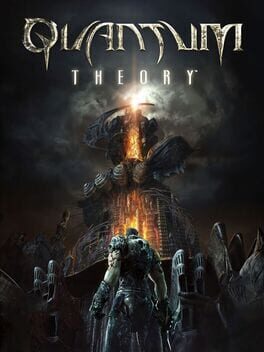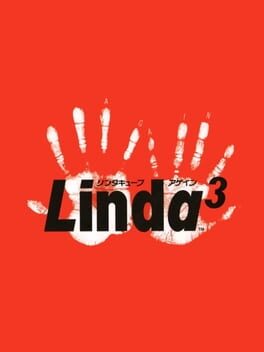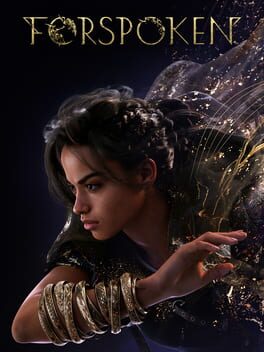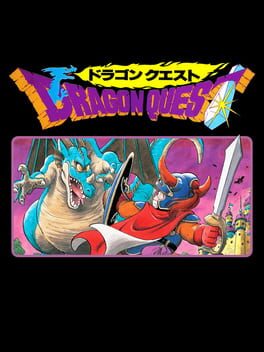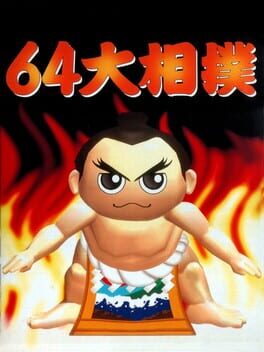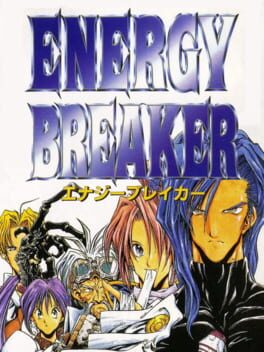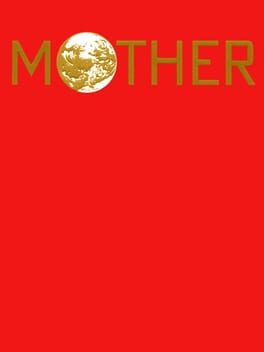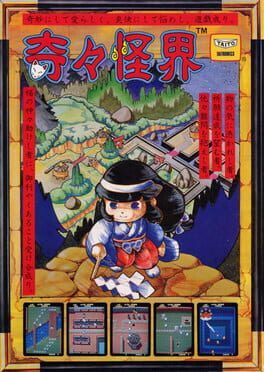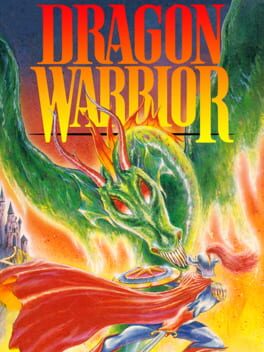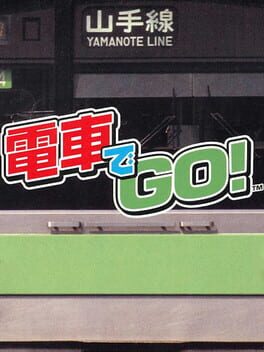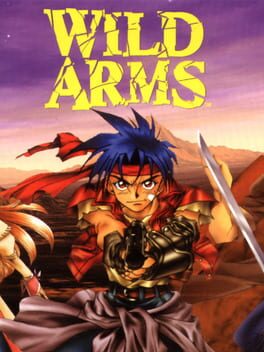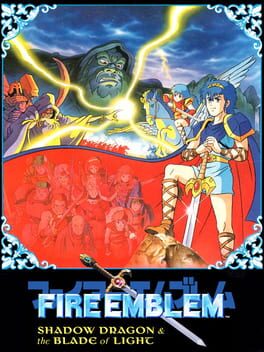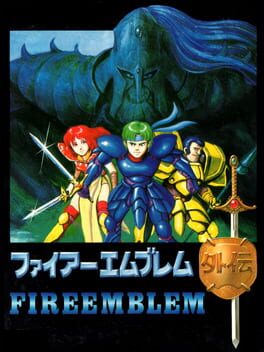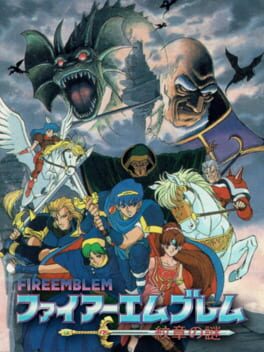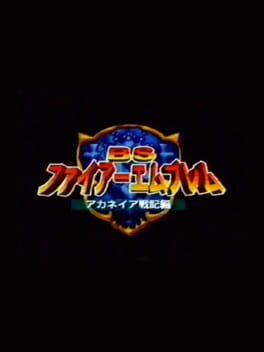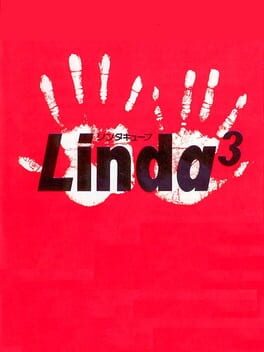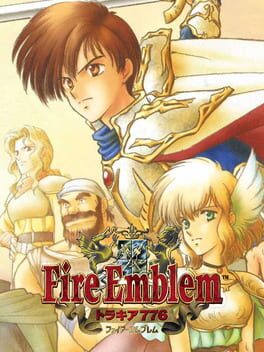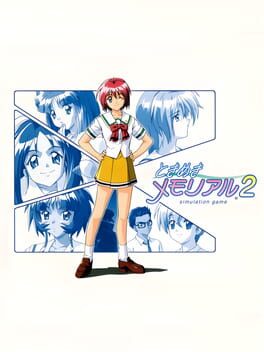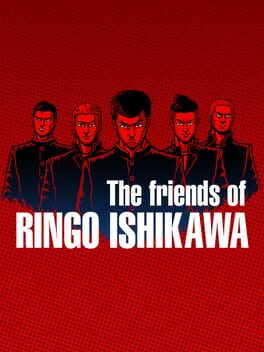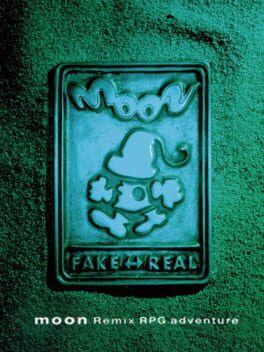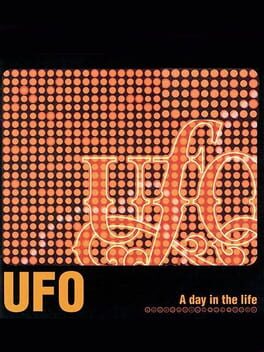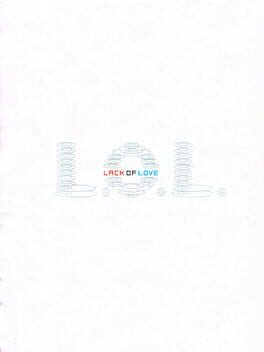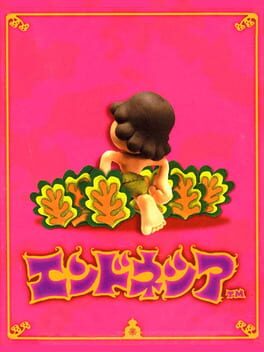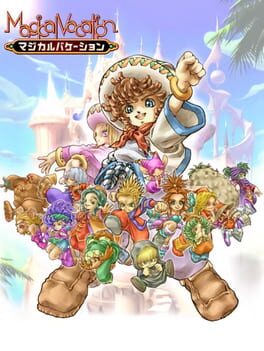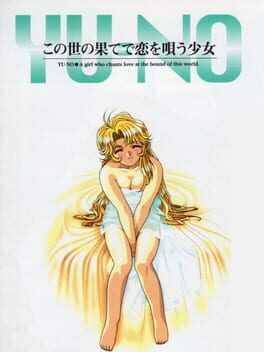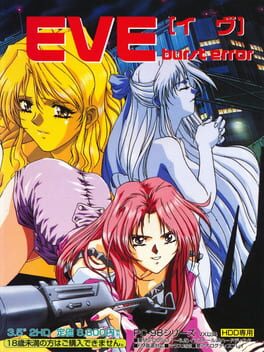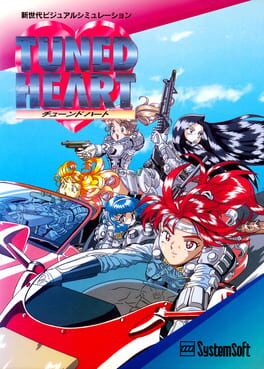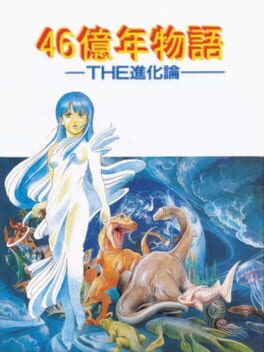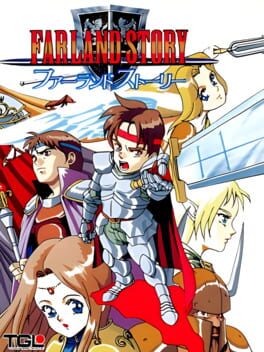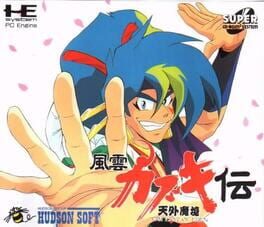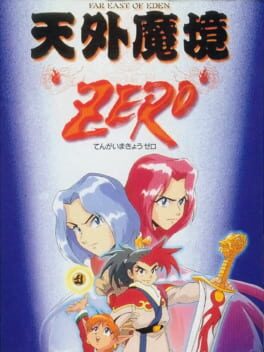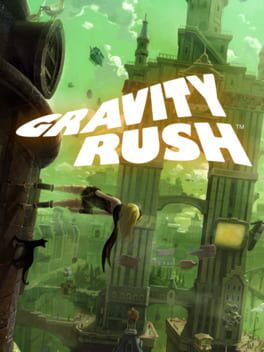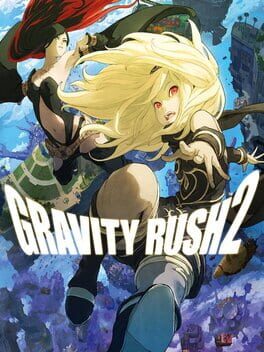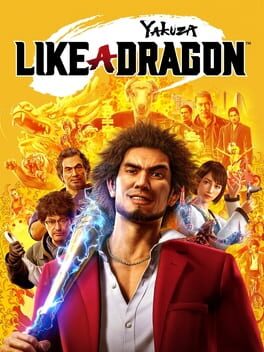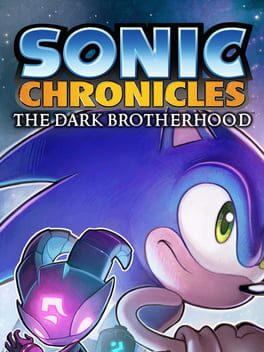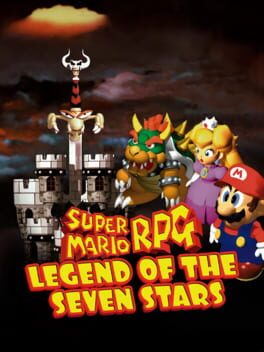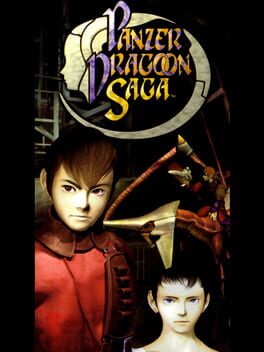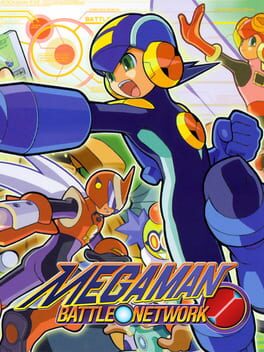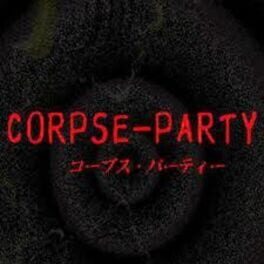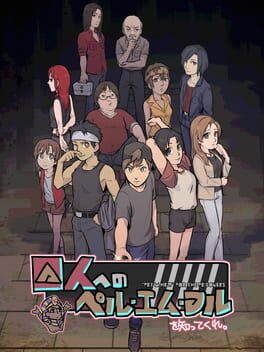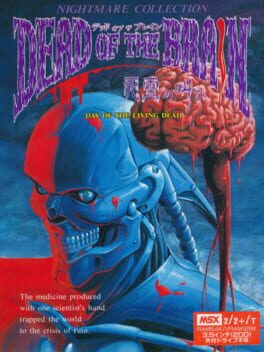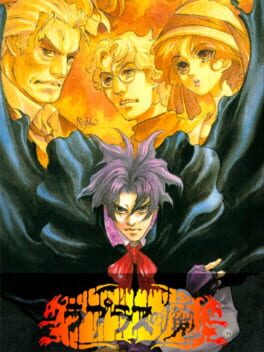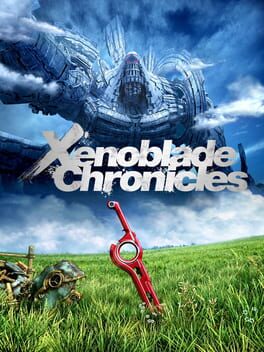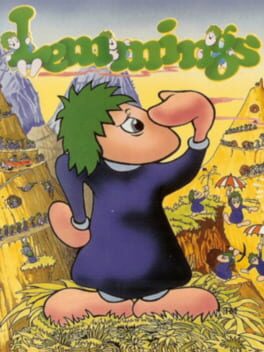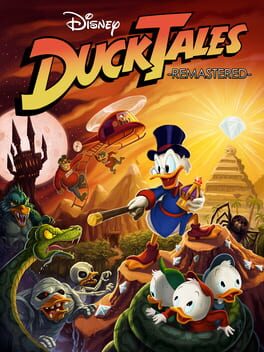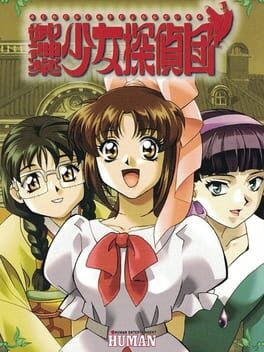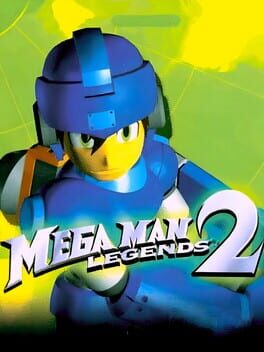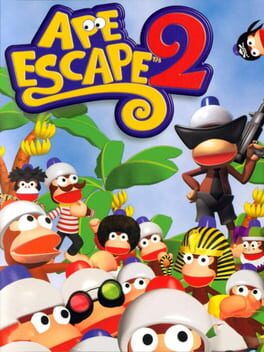mooptea
96 reviews liked by mooptea
Quantum Theory
2010
Ironic that a game who’s plot is about breaking your programming and going against what would be expected of you ends up with a reputation that takes what it presents at face value and twists what it actually is so it could fit the mold of what people expect 7th gen games to be, and this game faces no critical re-evaluation to this day, simply look at that disgrace of a description, in-fact there’s only one other person who appreciates it for what it is and he is the one who recommended this to me in the first place, it seems everyone else is still stuck up on taking the first 45 minutes of this game as gospel for representing everything else it has, failing to recognize that the game acknowledges the doubts a person could have about sci-fi military shooters of that gen because it begins with a section that can’t be anything other than a parody to GoW. Shed away all of that and you have a fantastic shooter underneath with a heartfelt sci-fi story, the variety of weapons on display here are nice and fit whatever playstyle you’d want to go for, there’s also the fact that you can combo with your partner to unleash some devastating attacks, it all flows into one, fluid gameplay system.
TL;DR, it’s not a fucking GoW clone or a cover shooter.
TL;DR, it’s not a fucking GoW clone or a cover shooter.
Linda Cube Again
1997
The definitive Noah's Ark game. To think this was originally released a year after Super 3-D Noah's Ark, and three years after Noah's Ark for the NES.
But enough joking, this translation patch was a long time coming after ivantod's fan translation, and I'm truly thankful to be able to experience this game in a way that's not just gazing at the illustrations by Cannabis (Tatsuyuki Tanaka).
There's three scenarios – and an extra Scenario D that's a time trial mode. Scenario A and B are essentially tutorials that serve to familiarise you with the story and characters, and let you explore ⅔ of the planet. The true game begins in Scenario C.
The first thing you want to do is get a free dog, buy a second dog and off you go. You have more than enough time to rescue all the cute, weird and ugly animals before the Grim Reaper comes. Everything else you can ask the NPCs. They will explain some of the many esoteric game mechanics, and others have dialogue that reinforces the game's primal theme of life (sex) and death (the meteor). I appreciate the raunchy humour. It's very human. The whole game is. Makes me want to know more about the PC Engine version, and how much it differs from the remake besides the audio-visuals.
Linda, of course, is the main attraction. I like Linda. Though I must say I prefer her pink hair to turquoise. I also like that you help her through her mental and physical impediment in Scenarios A and B respectively. She's more of a main character than Ken, who has the personality of a punching bag. He makes more in-depth comments about furniture than 90% of the story, despite being a voiced protagonist. Too wishy-washy for my liking.
Ken and Linda's relationship – at first glance – can be summarised by the concept art where Linda yells, "SUFFER BABY!!" to a Ken locked in her Cobra Twist, screaming, "MORE POWER! MORE FREEDOM! THEY'RE GOIN' WILD BABY!! HELP!!!" But their camping scenes are much more intimate, and the pay-off at the end is fantastic.
Linda³ Linda³ Linda³ Again is absolutely worth playing, even if you find yourself lost in this heavenly zoo.
But enough joking, this translation patch was a long time coming after ivantod's fan translation, and I'm truly thankful to be able to experience this game in a way that's not just gazing at the illustrations by Cannabis (Tatsuyuki Tanaka).
There's three scenarios – and an extra Scenario D that's a time trial mode. Scenario A and B are essentially tutorials that serve to familiarise you with the story and characters, and let you explore ⅔ of the planet. The true game begins in Scenario C.
The first thing you want to do is get a free dog, buy a second dog and off you go. You have more than enough time to rescue all the cute, weird and ugly animals before the Grim Reaper comes. Everything else you can ask the NPCs. They will explain some of the many esoteric game mechanics, and others have dialogue that reinforces the game's primal theme of life (sex) and death (the meteor). I appreciate the raunchy humour. It's very human. The whole game is. Makes me want to know more about the PC Engine version, and how much it differs from the remake besides the audio-visuals.
Linda, of course, is the main attraction. I like Linda. Though I must say I prefer her pink hair to turquoise. I also like that you help her through her mental and physical impediment in Scenarios A and B respectively. She's more of a main character than Ken, who has the personality of a punching bag. He makes more in-depth comments about furniture than 90% of the story, despite being a voiced protagonist. Too wishy-washy for my liking.
Ken and Linda's relationship – at first glance – can be summarised by the concept art where Linda yells, "SUFFER BABY!!" to a Ken locked in her Cobra Twist, screaming, "MORE POWER! MORE FREEDOM! THEY'RE GOIN' WILD BABY!! HELP!!!" But their camping scenes are much more intimate, and the pay-off at the end is fantastic.
Linda³ Linda³ Linda³ Again is absolutely worth playing, even if you find yourself lost in this heavenly zoo.
Phantom Dust
2004
I see a lot of reviews going back and forth over the "card game" mechanics of this game and yeah it's...a little hard to exactly specify what it is since it's partially a deck building card game, but put into a free-roaming action game. A big appeal of it is that it offers risk/reward and ways to use said deck of skills for your benefit or your opponent's detriment. On top of this man of the skills have different situational uses as well and can be used purely for support even if needed. The strategy in the deck-building is definitely unique and engaging, but it also requires the player to be smart about their traversal in the environment and have a back up in case a primary strat goes haywire.
I went through about 15 deck revisions playing this and I adored just trying to figure out what would work best against the next set of enemies.
But other than that, this game is gorgeous, has a horribly depressing story to tell in a horribly depressing world, set to music that is just...hauntingly gorgeous and surreal. A one of a kind game that I don't think we'll ever see again.
I went through about 15 deck revisions playing this and I adored just trying to figure out what would work best against the next set of enemies.
But other than that, this game is gorgeous, has a horribly depressing story to tell in a horribly depressing world, set to music that is just...hauntingly gorgeous and surreal. A one of a kind game that I don't think we'll ever see again.
Phantom Dust
2004
Nothing like it anywhere else, unique and very fun "action card game" that was never replicated for some reason. Only arrived at the shores of the west through sheer love from the dev team. Great biopunk story, cool and stylish designs, beautiful use of normal mapping for it's great lightning effects. Can find no negatives besides never getting a sequel or at least other games trying to imitate it. It's also FREE ON PC RIGHT NOW
Forspoken
2023
above everything, Forspoken hit me with what it does between the main narrative. while exploring the world of Athia as Frey, you can connect to her journey more directly than what the outsorced main narrative affords. she was stuck in a practically inescapable homelessness situation in New York where she was shunned by almost everyone around her. in there, she could only use her athleticism to run away.
Frey had no connections other than her pet cat to sustain her will.
she then goes through her standard fare isekai initiation and ends up in Athia, learning powers that allow her to both fight back and extend her already impressive physical abilities to extraordinary lengths. by this point the parallels between the two worlds become really clear. is it basically the purest definition of escapism? maybe, but i'd say that much is lost by putting Forspoken inside a box.
Frey's journey in Athia is akin to one of struggling witch learning to accept herself. she's still socially shunned by the higher classes, but she doesn't have to depend on them like she did in New York (there isn't even a fixed currency system!). she gets her own pointy witch houses where she can craft potions, enchant robes and necklaces and take care of her (up to) 13 supernatural cats, each spiritually connected to Athia's mythology. Frey is frequently called a heretic for it.
ultimately, she needs to kill the four demigoddesses that used to rule Athia before losing their minds. she's initially disgusted even by their legacy, but nonetheless has to absorb their powers when she kills each of them. each time the player helps her do this, her abilities grow larger and more varied. they all help Frey explore and thus understand the world better, consequently growing fonder of the four women and spiritually becoming her own amalgam of ancestry and experiences. she isn't defined by them, but she learns to accept them. i don't really wanna spoil anything, so i'll keep from talking about the later stuff that expands upon this aspect.
you can choose to spend as much time jumping around the now almost-natural landscapes of Athia as you want. each open world chapter only asks Frey to go toward the dominion of a specific demigoddess and kill them. this objective is always located pretty far away, and there are these completely optional, game-length areas in here that you can explore while travelling. to appropriately explore Athia, you have to connect with the different demigoddesses by using their abilities; mainly Frey's mysterious first set of magic.
Forspoken is a journey defined by the moments you spend together with its vast land. the game allows you to do this without the need to directly cross over with the main narrative, which i didn't touch because i don't find it that interesting to discuss.
Athia is a rich, nature-heavy (due to the quasi-apocalypse it suffered) land with as many heigths as mundane locations that make it feel tangible, especially when you take a moment to absorb the space it shares with you. it only asks you to accept the connection.
\\
this review is a little wild, but it reflects my pretty weird experience with the game so i'll let it be.
Frey had no connections other than her pet cat to sustain her will.
she then goes through her standard fare isekai initiation and ends up in Athia, learning powers that allow her to both fight back and extend her already impressive physical abilities to extraordinary lengths. by this point the parallels between the two worlds become really clear. is it basically the purest definition of escapism? maybe, but i'd say that much is lost by putting Forspoken inside a box.
Frey's journey in Athia is akin to one of struggling witch learning to accept herself. she's still socially shunned by the higher classes, but she doesn't have to depend on them like she did in New York (there isn't even a fixed currency system!). she gets her own pointy witch houses where she can craft potions, enchant robes and necklaces and take care of her (up to) 13 supernatural cats, each spiritually connected to Athia's mythology. Frey is frequently called a heretic for it.
ultimately, she needs to kill the four demigoddesses that used to rule Athia before losing their minds. she's initially disgusted even by their legacy, but nonetheless has to absorb their powers when she kills each of them. each time the player helps her do this, her abilities grow larger and more varied. they all help Frey explore and thus understand the world better, consequently growing fonder of the four women and spiritually becoming her own amalgam of ancestry and experiences. she isn't defined by them, but she learns to accept them. i don't really wanna spoil anything, so i'll keep from talking about the later stuff that expands upon this aspect.
you can choose to spend as much time jumping around the now almost-natural landscapes of Athia as you want. each open world chapter only asks Frey to go toward the dominion of a specific demigoddess and kill them. this objective is always located pretty far away, and there are these completely optional, game-length areas in here that you can explore while travelling. to appropriately explore Athia, you have to connect with the different demigoddesses by using their abilities; mainly Frey's mysterious first set of magic.
Forspoken is a journey defined by the moments you spend together with its vast land. the game allows you to do this without the need to directly cross over with the main narrative, which i didn't touch because i don't find it that interesting to discuss.
Athia is a rich, nature-heavy (due to the quasi-apocalypse it suffered) land with as many heigths as mundane locations that make it feel tangible, especially when you take a moment to absorb the space it shares with you. it only asks you to accept the connection.
\\
this review is a little wild, but it reflects my pretty weird experience with the game so i'll let it be.
Dragon Quest
1993
(snes version)
All but perfectly composed. The way the world folds out from your central location (the place you save), the magnificent numbers tuning where a 5 is the most beautiful thing you've ever seen, the hum of combat stripped to its essentials and the light open-world design that encourages interacting with its residents...Dragon Quest basically one-and-done'd it all. About the only thing I have any desire to ding it for is that magic is largely useless outside of healing and traversal, half your arsenal profoundly unnecessary in a game otherwise so tightly formed.
But honestly who cares when faced with Dragon Quest's greatest strength: its tone. Despite the image DQ has accrued of being lovely and charming and nostalgic and warm, this game is a profoundly sad experience. The world is dead. Towns are in ruins. Poison litters the ground as naturally as water and there are more bloodthirsty, alien monsters than there are people anymore. And every person you talk to time and time again puts it all on you: you have to save us, you are the only one who can. There are no party members, it's a journey of solitude. No friends to make, no campfire stories or wacky hijinx to get into, just the one thing you were born to do. You have no choice; it's in your blood. You can't even die, fate and duty so strong that you are brought back again and again until you succeed. Every inch of this game is oozing a melancholic weight heavier than just about anything in gaming. It's no coincidence that Koichi Sugiyama's (god not rest his soul) overworld theme here, the song you are treated to the most, brings to mind the fog before a rain more than any idea of adventure.
Palpable stuff! Stuff that is astounding in its own right but which also builds to a transcendent release at the end, one of the great narrative moments in a game, when you finally accomplish your goal and the world explodes into flowers and all the monsters vanish and everyone celebrates and you, the hero, freed from the grip of responsibility and expectation, life now perfectly without purpose, wander off to new worlds. (something something about killing the dark fascist lord and then rejecting your noble monarchal position to live free from systems of power)
I repeat: all but perfectly composed.
All but perfectly composed. The way the world folds out from your central location (the place you save), the magnificent numbers tuning where a 5 is the most beautiful thing you've ever seen, the hum of combat stripped to its essentials and the light open-world design that encourages interacting with its residents...Dragon Quest basically one-and-done'd it all. About the only thing I have any desire to ding it for is that magic is largely useless outside of healing and traversal, half your arsenal profoundly unnecessary in a game otherwise so tightly formed.
But honestly who cares when faced with Dragon Quest's greatest strength: its tone. Despite the image DQ has accrued of being lovely and charming and nostalgic and warm, this game is a profoundly sad experience. The world is dead. Towns are in ruins. Poison litters the ground as naturally as water and there are more bloodthirsty, alien monsters than there are people anymore. And every person you talk to time and time again puts it all on you: you have to save us, you are the only one who can. There are no party members, it's a journey of solitude. No friends to make, no campfire stories or wacky hijinx to get into, just the one thing you were born to do. You have no choice; it's in your blood. You can't even die, fate and duty so strong that you are brought back again and again until you succeed. Every inch of this game is oozing a melancholic weight heavier than just about anything in gaming. It's no coincidence that Koichi Sugiyama's (god not rest his soul) overworld theme here, the song you are treated to the most, brings to mind the fog before a rain more than any idea of adventure.
Palpable stuff! Stuff that is astounding in its own right but which also builds to a transcendent release at the end, one of the great narrative moments in a game, when you finally accomplish your goal and the world explodes into flowers and all the monsters vanish and everyone celebrates and you, the hero, freed from the grip of responsibility and expectation, life now perfectly without purpose, wander off to new worlds. (something something about killing the dark fascist lord and then rejecting your noble monarchal position to live free from systems of power)
I repeat: all but perfectly composed.
64 Oozumou
1997
N64 Magazine gave this Japanese-only sumo wrestling a rather impressive 90%. Even so, I was surprised as to how much I actually enjoyed this. Unfortunately, there is no fan patch for this game but thankfully Google Lens did a pretty good job at translating the dialogue – it was a bit odd in places, but I got the general gist of it.
And, surprisingly, there really is a lot of dialogue, as this has a fully fledged story mode – not just pitting you against other fighters like every other fighting game, but a proper story about you joining the professional Sumo wrestling and your life outside of the ring. You’ll encounter good or bad events based on how you perform in the matches.
Each match is extremely short but very fast paced. The game suggests optimal moves, but you can also do your own thing. To be completely honest, I wasn’t entirely sure what I was doing most of the time and there was a lot of button mashing, but I did deduce that there was a rhythm to the fighting, and performing moves in time to your opponent’s bar flashing is what triggers your finishing moves. The matches are only on average 30 seconds but extremely frantic and they are surprisingly a lot of fun.
As you defeat higher ranked opponents, you’ll gain stars which let you achieve a higher rank, with your goal being to be the best Sumo wrestler. After each tournament, you can also play a minigame.
There are five minigames: sleeping, eating, training, jumping and fishing. The first four are short, enjoyable distractions while I couldn’t figure out the fishing at all. They’re a nice, relaxing change of pace for a quick breather before the next tournament. Sleeping has you rolling around a little island collecting stars, eating has a judge calling out food you need to grab before your opponent, training is a “simon says” and jumping has you moon jumping high in the air, bouncing off trampolines and clouds as you pop balloons.
Between some individual matches and tournaments, you’ll progress in the story. To begin with, it seems like a bunch of random events as your character interacts with a few different girls (eventually going on dates with all of them), rivals and a few other characters. I am not sure how much your performance in the game affects the outcome, but one girl (Akira) eventually suggests marriage – which was surprising as my main character had stood her up on two dates. On one, he overslept, on another, he forgot and had a date with someone else.
The only direct choice was choosing your response to the marriage, although I suspect that saying you want to concentrate on your Sumo for now has the same end result, as if you say yes, Akira suggests waiting until you’re at the top anyway. However, the encounters and dialogue are charming on their own.
As you approach the high ranks, the story becomes more plot focused as you get attacked and then discover a “Dark Sumo” illegal gambling ring. You shut it down (you still have no input on this, it’s just dialogue) and the leader vows revenge – which he does on his wedding day as he kidnaps your wife.
The ending is both utterly absurd and wonderfully charming at the same time as you have your final fight with this villain and his “ultimate body”.
Sumo 64 is a combination of really enjoyable short fighting mixed with charming dialogue (which would probably be even better if it got a proper translation). If you understand Japanese or are willing to point your phone at your TV a lot, this is a surprisingly great game.
And, surprisingly, there really is a lot of dialogue, as this has a fully fledged story mode – not just pitting you against other fighters like every other fighting game, but a proper story about you joining the professional Sumo wrestling and your life outside of the ring. You’ll encounter good or bad events based on how you perform in the matches.
Each match is extremely short but very fast paced. The game suggests optimal moves, but you can also do your own thing. To be completely honest, I wasn’t entirely sure what I was doing most of the time and there was a lot of button mashing, but I did deduce that there was a rhythm to the fighting, and performing moves in time to your opponent’s bar flashing is what triggers your finishing moves. The matches are only on average 30 seconds but extremely frantic and they are surprisingly a lot of fun.
As you defeat higher ranked opponents, you’ll gain stars which let you achieve a higher rank, with your goal being to be the best Sumo wrestler. After each tournament, you can also play a minigame.
There are five minigames: sleeping, eating, training, jumping and fishing. The first four are short, enjoyable distractions while I couldn’t figure out the fishing at all. They’re a nice, relaxing change of pace for a quick breather before the next tournament. Sleeping has you rolling around a little island collecting stars, eating has a judge calling out food you need to grab before your opponent, training is a “simon says” and jumping has you moon jumping high in the air, bouncing off trampolines and clouds as you pop balloons.
Between some individual matches and tournaments, you’ll progress in the story. To begin with, it seems like a bunch of random events as your character interacts with a few different girls (eventually going on dates with all of them), rivals and a few other characters. I am not sure how much your performance in the game affects the outcome, but one girl (Akira) eventually suggests marriage – which was surprising as my main character had stood her up on two dates. On one, he overslept, on another, he forgot and had a date with someone else.
The only direct choice was choosing your response to the marriage, although I suspect that saying you want to concentrate on your Sumo for now has the same end result, as if you say yes, Akira suggests waiting until you’re at the top anyway. However, the encounters and dialogue are charming on their own.
As you approach the high ranks, the story becomes more plot focused as you get attacked and then discover a “Dark Sumo” illegal gambling ring. You shut it down (you still have no input on this, it’s just dialogue) and the leader vows revenge – which he does on his wedding day as he kidnaps your wife.
The ending is both utterly absurd and wonderfully charming at the same time as you have your final fight with this villain and his “ultimate body”.
Sumo 64 is a combination of really enjoyable short fighting mixed with charming dialogue (which would probably be even better if it got a proper translation). If you understand Japanese or are willing to point your phone at your TV a lot, this is a surprisingly great game.
Linda Cube Again
1997
Linda Cube is divided into 3 main scenarios and a bonus scenario. The first two scenarios are story based shorter scenarios that can be completed in about 2 in-game years, the 3rd one is an open world scenario with very little in terms of required story, primarily revealing events through NPC dialogue and sidequests. The first two kind of function as tutorials to get you used to the world before you really get into exploring Neo Kenya to rescue every animal in the 3rd. This 3rd scenario is a very enjoyable open world game. Small compared to modern games, but quite dense compared to them as well. Many questions are raised about the nature of the world, but often we are just left with implications rather than answers. There’s lots of themes to be seen from the game too. There's the obvious fact that the indigenous people of Neo Kenya are a lower class than the earth humans, but scenario A takes this further with the Christmas themed pharmaceutical company and indigenous villages being slaughtered on Christmas in the past.
Linda Cube’s battle mechanics are mostly straightforward RPG mechanics, but the fact that animals need to be captured, not killed creates its distinctions. Rather than worrying about grinding, often you need to worry about causing too much damage and killing an animal. I was often using skills to make sure I don’t deal heavy damage. Sometimes there's a weak animal that's best killed by throwing fresh poop at it till it's captured. But don't keep it in your inventory for more than a season or it will dry and only do one damage at a time. Actually there is one specific use for that too. Knowing each animal's behavior and how to encounter it can be a challenge too. Only female anglerfish are found in the wild, like real life. So the easy way to get a male is to capture a few and dissect them for eggs to hatch into males. Sometimes you don't need to battle though. You can buy animals, capture them in traps, and buy them in illegal auctions.
The animals themselves have quite odd designs. All are named after earth animals, though their familiarity varies from wolves being very similar to reindeer only being vaguely similar. Compared to the original Turbografx designs, the PS1 versions maintain weirdness, thought they are less creepy. I prefer the Turbografx designs, though the PS1 has improvements such as only keeping a single palette swap (Frog and tree frog). The small amount of Turbografx exclusive animals seem to be odd and generally a mismatch from the appeal of a somewhat familiar animal. The Stand may be disturbing, but it’s not disturbing in the way that I appreciate the other animals are. Even with these animals being so weird, they still need to be saved.
Speaking of Turbografx differences, the summer theme there is a lot better. Hope that gets translated too eventually.
Linda Cube’s battle mechanics are mostly straightforward RPG mechanics, but the fact that animals need to be captured, not killed creates its distinctions. Rather than worrying about grinding, often you need to worry about causing too much damage and killing an animal. I was often using skills to make sure I don’t deal heavy damage. Sometimes there's a weak animal that's best killed by throwing fresh poop at it till it's captured. But don't keep it in your inventory for more than a season or it will dry and only do one damage at a time. Actually there is one specific use for that too. Knowing each animal's behavior and how to encounter it can be a challenge too. Only female anglerfish are found in the wild, like real life. So the easy way to get a male is to capture a few and dissect them for eggs to hatch into males. Sometimes you don't need to battle though. You can buy animals, capture them in traps, and buy them in illegal auctions.
The animals themselves have quite odd designs. All are named after earth animals, though their familiarity varies from wolves being very similar to reindeer only being vaguely similar. Compared to the original Turbografx designs, the PS1 versions maintain weirdness, thought they are less creepy. I prefer the Turbografx designs, though the PS1 has improvements such as only keeping a single palette swap (Frog and tree frog). The small amount of Turbografx exclusive animals seem to be odd and generally a mismatch from the appeal of a somewhat familiar animal. The Stand may be disturbing, but it’s not disturbing in the way that I appreciate the other animals are. Even with these animals being so weird, they still need to be saved.
Speaking of Turbografx differences, the summer theme there is a lot better. Hope that gets translated too eventually.
Kyoei Toshi
2017
It's sometime in the middle of the night. The streets of the city are deserted, save for a few poor souls seeking shelter and, of course, all the debris strewn about. We look up at a street corner and notice that we're in front of a radio station, and the lights are on inside. My friend Yuki insists we go in. I'm very tired, and it seems like as good a place to rest as any.
When we get up to the studio on the 5th or 6th floor, we find about a dozen people, maybe a few more already here. There are some chairs set up in the studio itself, and a woman sits at a grand piano. I see a guy who looks like he might work here; I ask him what's going on. "Normally you'd have to pay, but a bunch of people didn't show up, so go on in," he says. Yuki and I go in and take a seat.
After a few moments, the woman at the piano speaks: "Welcome to our regular live broadcast of Midnight Sky Garden. With everything going on, we had decided to cancel tonight's performance, but then we saw the number of people who showed up anyway--people who, despite the danger outside, made the trek to our studio tonight to see me play. And we thought about it, and we thought that maybe, with all the anxiety and fear and uncertainty in our lives right now, the best thing we could do is let the show go on, give all of you out there a moment of respite in these trying times. So without further ado..."
She begins to play. It's sweet, slow, lovely. The other audience members are enraptured. I--as in Me, not the Me I am playing in this video game--start to cry, and I don't know why. But then...maybe I do know. After all, these are trying times in the real world too, aren't they? Can I really be blamed for finding resonance in the notion of people putting themselves in extreme danger to seek out some fleeting semblance of normalcy and comfort? Or that someone else is willing to put their own selves at risk to provide that comfort? Well. In any event, I sit, and the video game Me sits, and I and Yuki and the sparse studio audience and the woman at the piano share this sweet, sad, quiet moment, not thinking about anything else, in this tiny studio, in the middle of the night, somewhere in the world.
And then an Eva unit cuts the building in half.
When we get up to the studio on the 5th or 6th floor, we find about a dozen people, maybe a few more already here. There are some chairs set up in the studio itself, and a woman sits at a grand piano. I see a guy who looks like he might work here; I ask him what's going on. "Normally you'd have to pay, but a bunch of people didn't show up, so go on in," he says. Yuki and I go in and take a seat.
After a few moments, the woman at the piano speaks: "Welcome to our regular live broadcast of Midnight Sky Garden. With everything going on, we had decided to cancel tonight's performance, but then we saw the number of people who showed up anyway--people who, despite the danger outside, made the trek to our studio tonight to see me play. And we thought about it, and we thought that maybe, with all the anxiety and fear and uncertainty in our lives right now, the best thing we could do is let the show go on, give all of you out there a moment of respite in these trying times. So without further ado..."
She begins to play. It's sweet, slow, lovely. The other audience members are enraptured. I--as in Me, not the Me I am playing in this video game--start to cry, and I don't know why. But then...maybe I do know. After all, these are trying times in the real world too, aren't they? Can I really be blamed for finding resonance in the notion of people putting themselves in extreme danger to seek out some fleeting semblance of normalcy and comfort? Or that someone else is willing to put their own selves at risk to provide that comfort? Well. In any event, I sit, and the video game Me sits, and I and Yuki and the sparse studio audience and the woman at the piano share this sweet, sad, quiet moment, not thinking about anything else, in this tiny studio, in the middle of the night, somewhere in the world.
And then an Eva unit cuts the building in half.
Energy Breaker
1996
First off, kudos to the group of independent translators that made this game possible for a wider audience. Never had I heard about it until this year.
And what a treat.
The sprite artwork is great, with super emotive animation - some of the best I've seen on the SNES. That and the dioramas reminded me a little bit of Super Mario RPG. (Bonus: although all the characters mostly share the same skill pool, some characters have different battle animations for the same skill. How cool is that!)
Story-wise, you can expect much of the typical JRPG fare, but the characters and fantasy/sci-fi setting offer a ton of distinction that elevate it above many other games.
The tactics battle system has a bit of a learning curve, but once realized, is super rewarding. Other than that, the inventory system is pretty frustrating and could use an overhaul.
I'm just so glad I got to experience this lost gem and I encourage other folks to do the same!
And what a treat.
The sprite artwork is great, with super emotive animation - some of the best I've seen on the SNES. That and the dioramas reminded me a little bit of Super Mario RPG. (Bonus: although all the characters mostly share the same skill pool, some characters have different battle animations for the same skill. How cool is that!)
Story-wise, you can expect much of the typical JRPG fare, but the characters and fantasy/sci-fi setting offer a ton of distinction that elevate it above many other games.
The tactics battle system has a bit of a learning curve, but once realized, is super rewarding. Other than that, the inventory system is pretty frustrating and could use an overhaul.
I'm just so glad I got to experience this lost gem and I encourage other folks to do the same!
24 lists liked by mooptea
by Funbil |
9 Games
by Goncalo |
11 Games
by El_Aleph |
20 Games
by GuiltClause |
50 Games
by LoreW001 |
81 Games
by LSW |
8 Games
by FallenGrace |
31 Games
by ponetelasmedias |
13 Games
by StewpendousMan |
15 Games
by Detchibe |
62 Games
